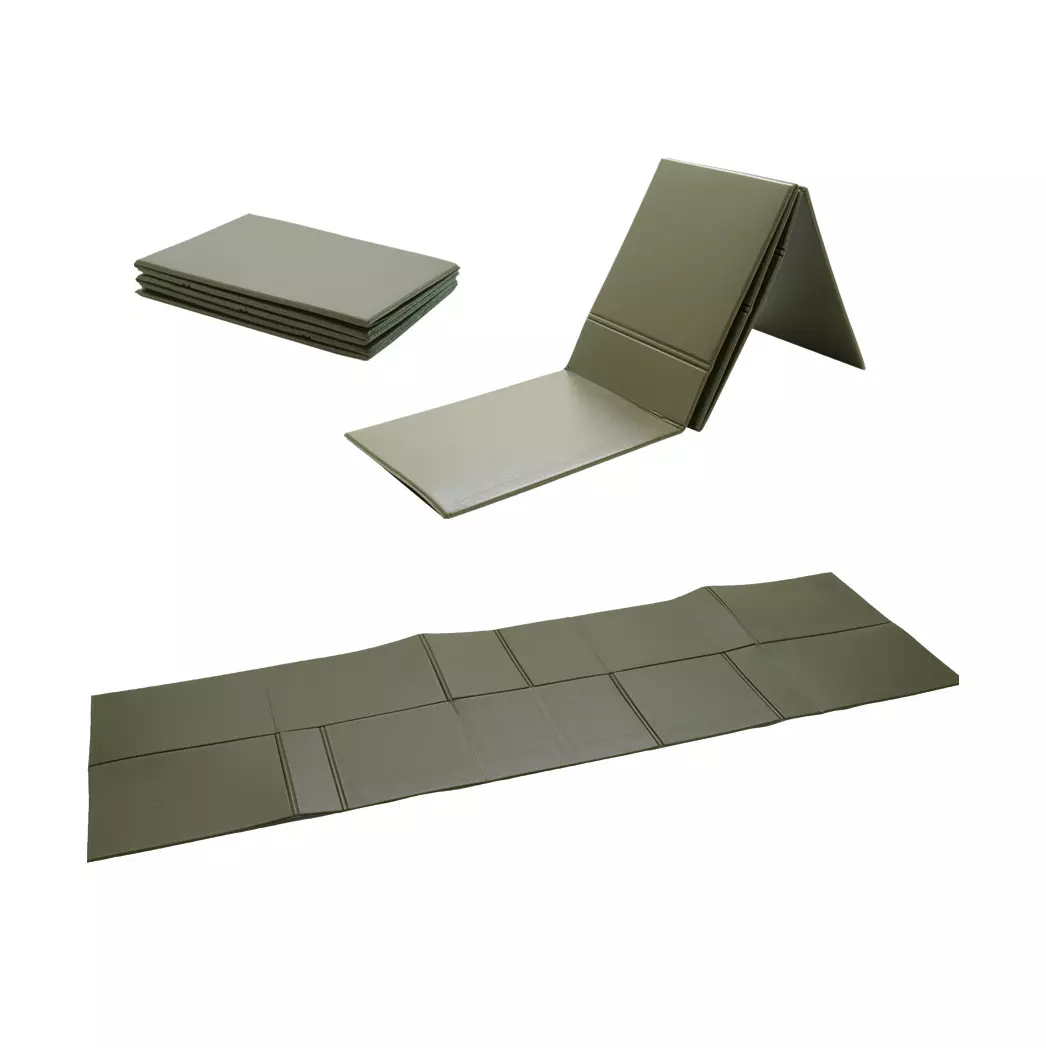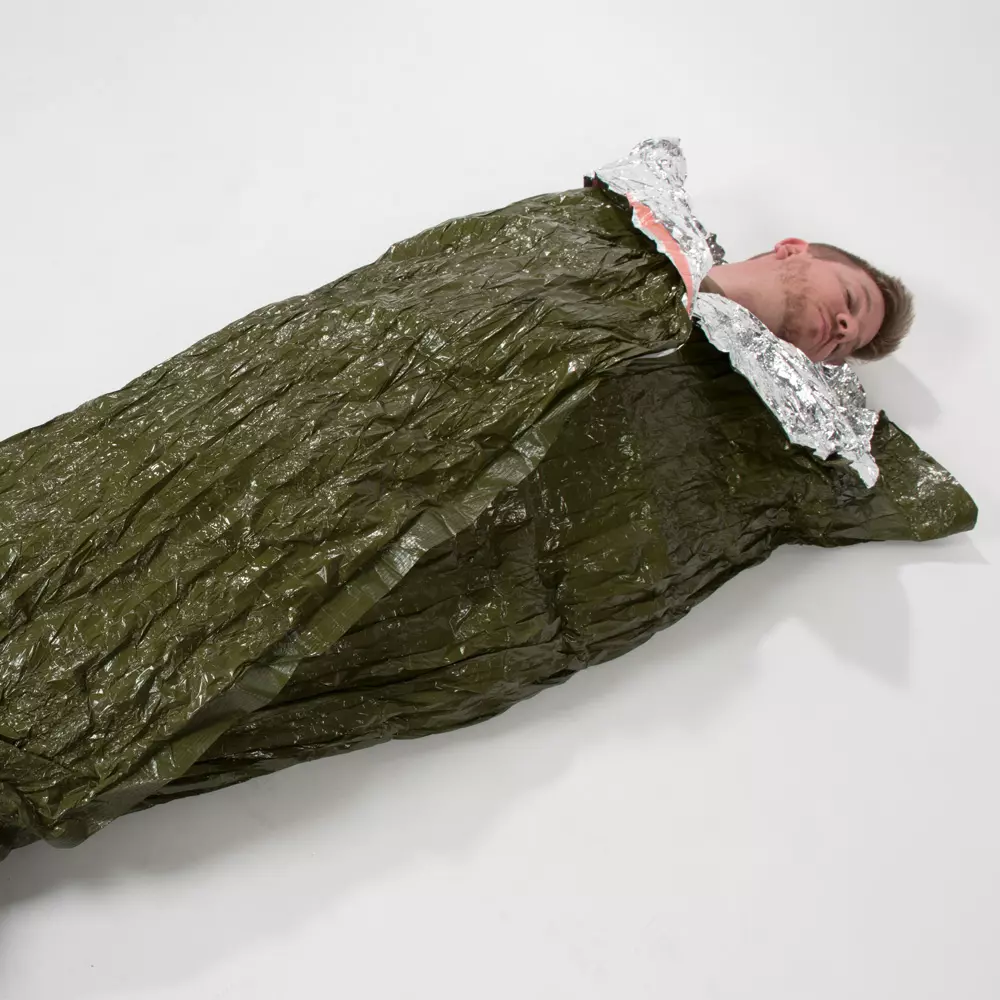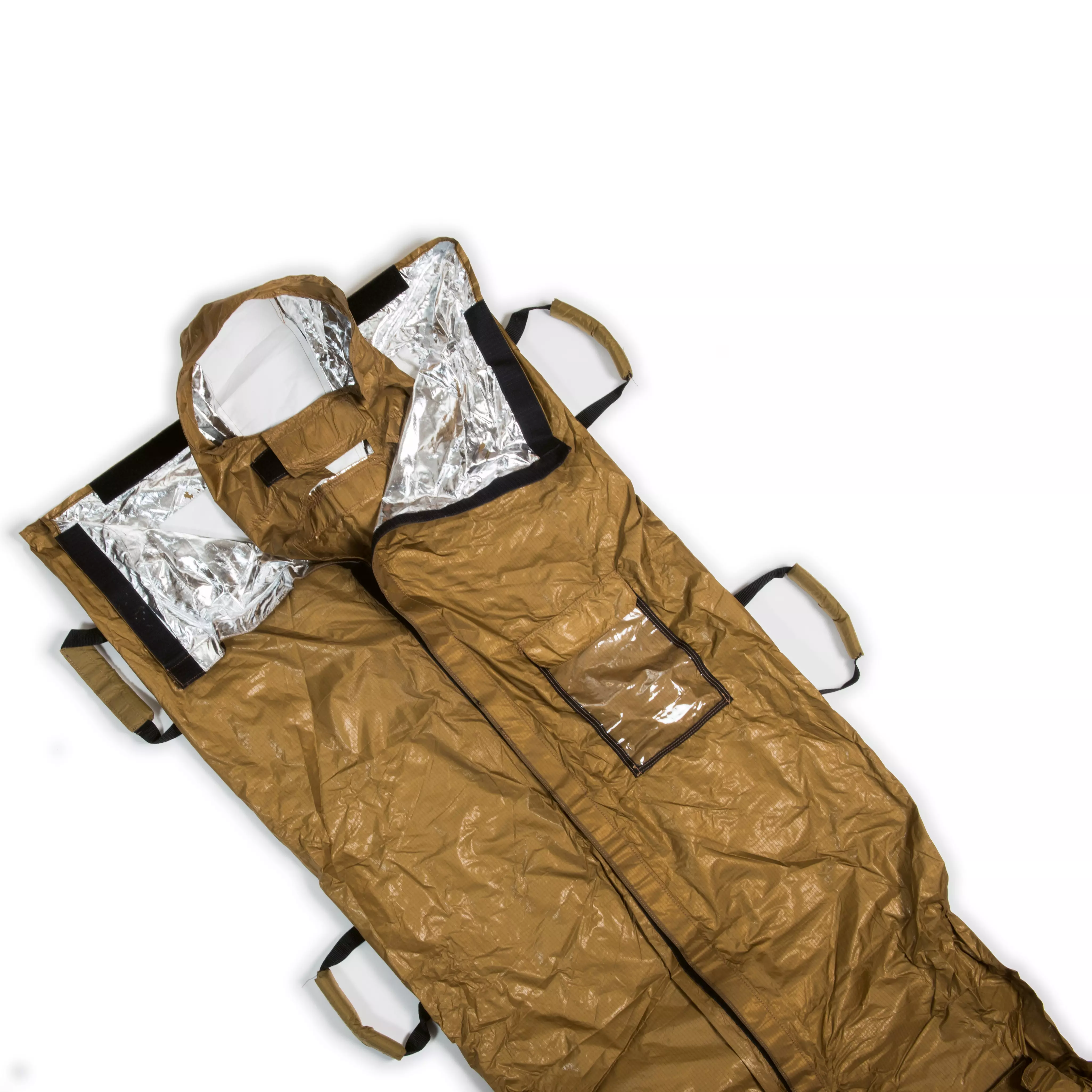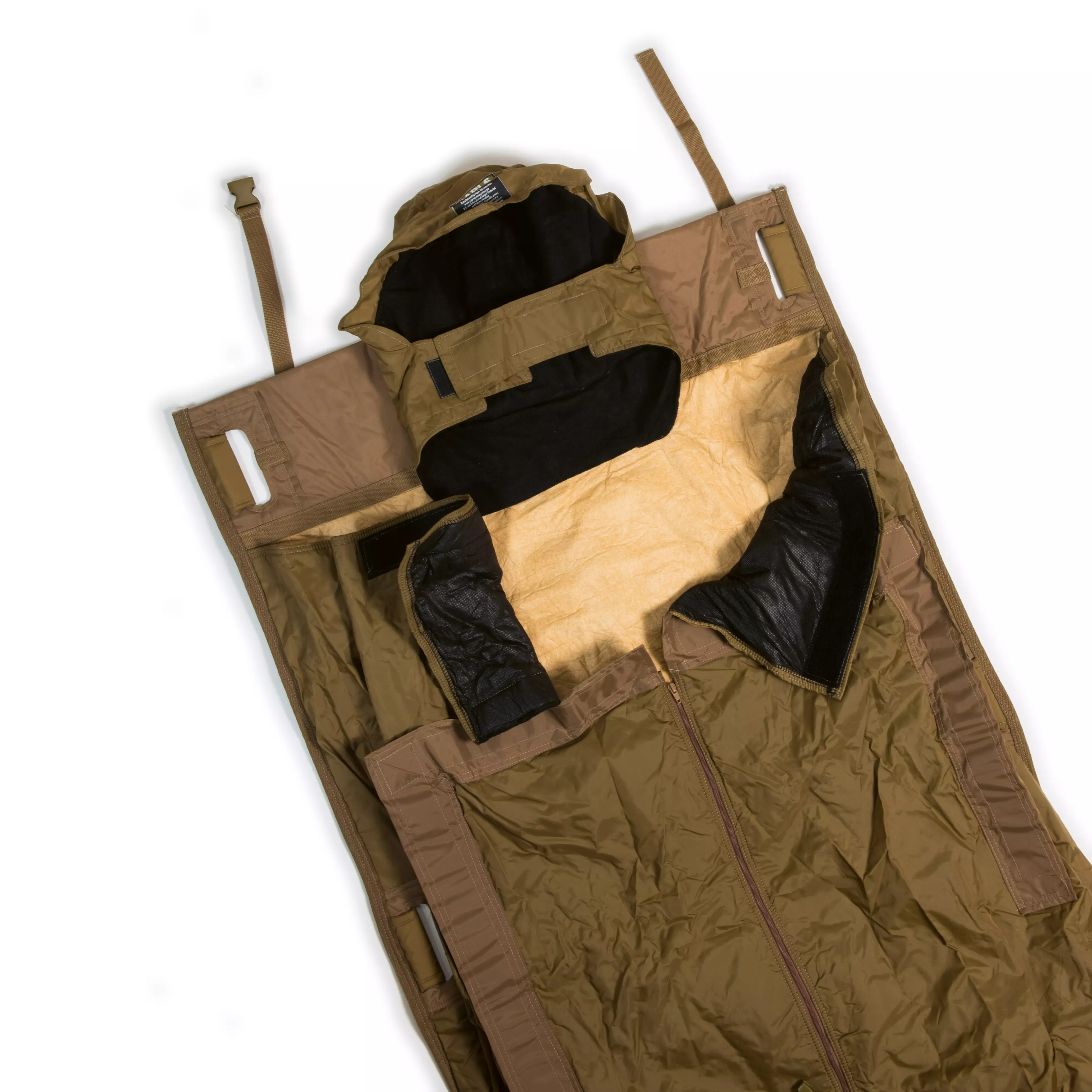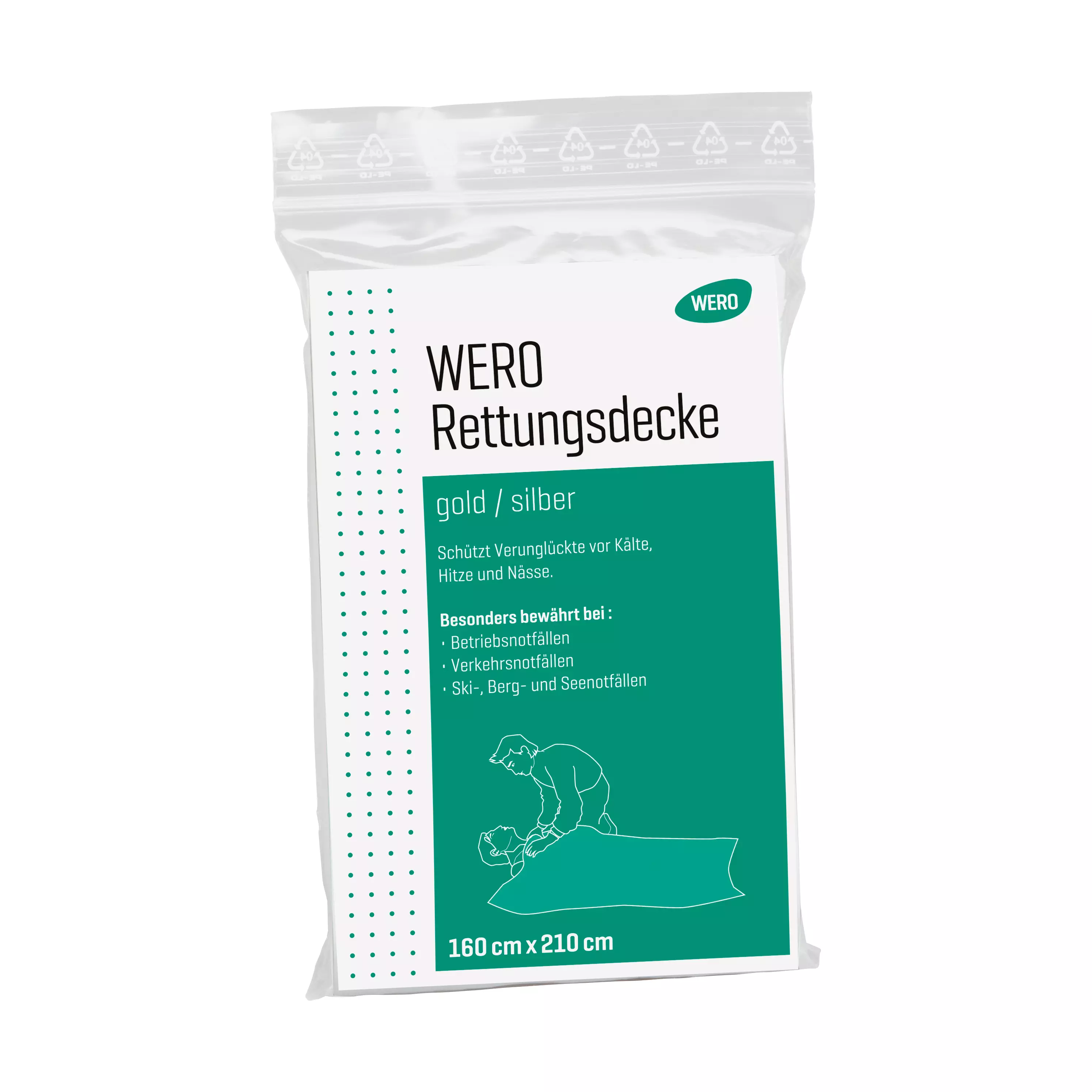The right way to deal with hypothermia
Hypothermia is a severe hypothermia of the body and therefore a sometimes acutely life-threatening situation for those affected. However, if patients are helped early enough, the chances of survival are good. For this to be possible, adequate first aid is required for further hypothermia treatment. We will tell you which skills are essential and what should not be missing from a comprehensive kit.
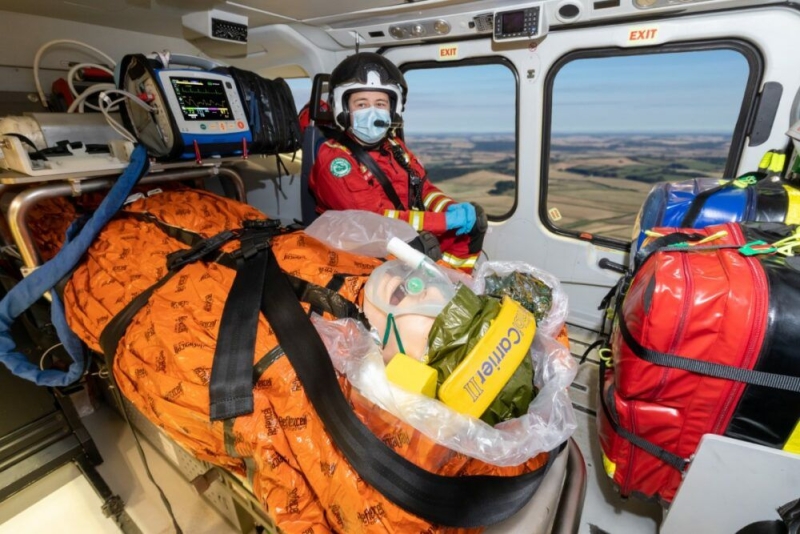
What forms of hypothermia are there?
5 tips to prevent hypothermia
Acting is better than reacting. This also applies to possible hypothermia. Because in the best case scenario, hypothermia does not occur in the first place.
1.The right clothing: Up to 20% of body heat is released via the head and upper body. The right outerwear including a hat can ensure that the body does not lose heat so quickly. The right choice of clothing is the be-all and end-all. But even the best outerwear is useless if it is wet. Wet clothing should always be avoided.
2.External heat sources: A warm and, above all, dry shelter or shelter is particularly important to regulate the body temperature during rest periods.
3.Exercise and breaks: Exercise can help to raise your body temperature if you spend long periods outdoors . However, it is also important that the body has enough rest periods to recharge its batteries.
4.Sufficient fluid intake: Especially in cold temperatures, the body should be supplied with sufficient fluids. Dehydration can accelerate the onset of imminent hypothermia .
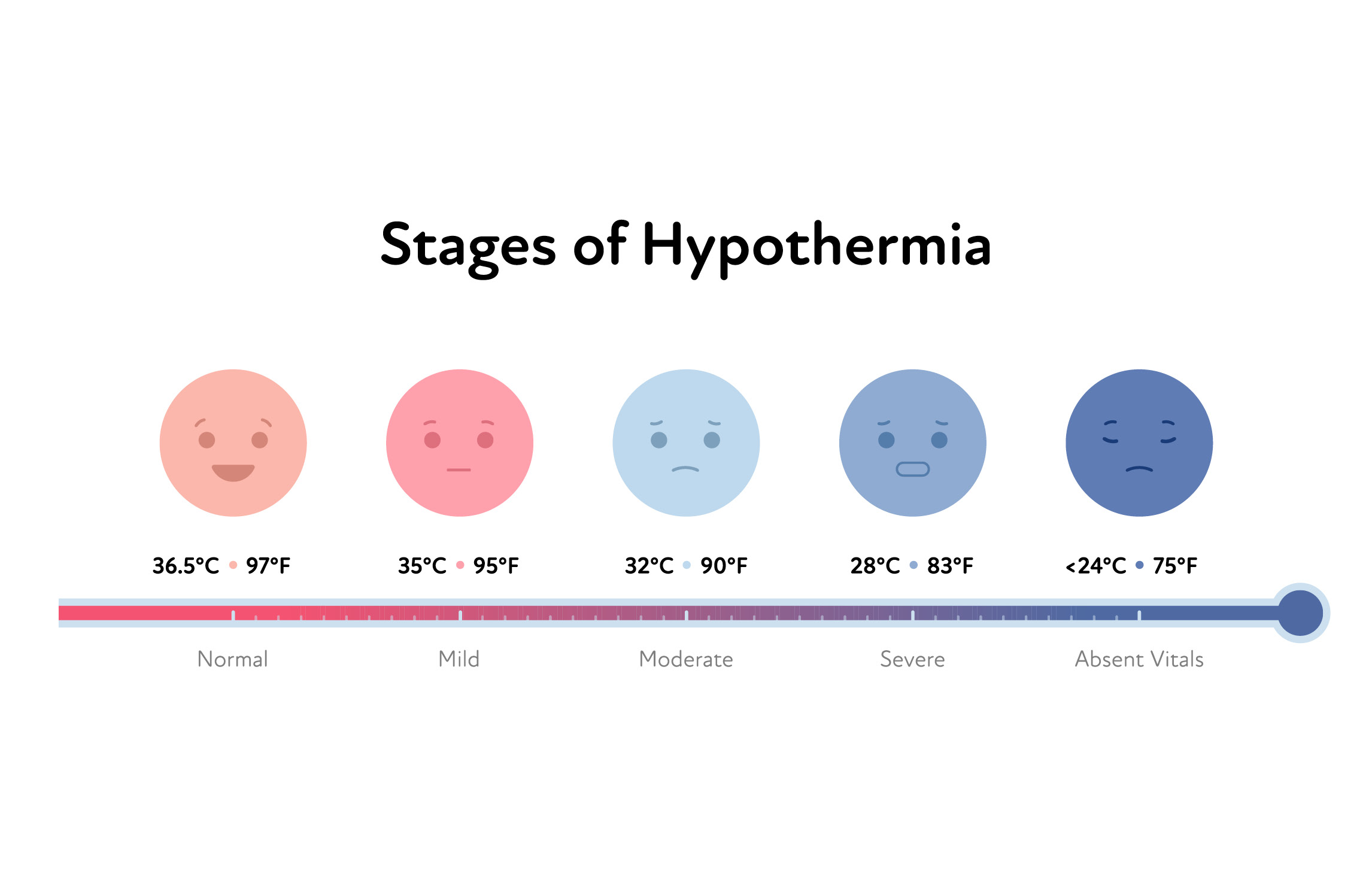
What are the symptoms of hypothermia?
If hypothermia is present, it can be recognised by various symptoms . Generally, those affected suffer from fatigue and pale, cold-feeling skin. It is not uncommon for cyanosis (bluish colouring of the skin and/or mucous membranes) to occur. The body perceives the drop in temperature and tries to counteract this process by contracting the blood vessels on the surface of the skin . The aim is to keep the blood temperature high for as long as possible. As hypothermia progresses, further specific symptoms also occur, depending on the stage.
What causes hypothermia?
Hypothermia occurs when a person's body releases more heat than it can produce over a longer period of time . Typical causes include accidents during winter sports activities (loss of orientation during snowstorms in cold temperatures, avalanches, falling into frozen water, etc.), risk of drowning, spending too long outdoors or in cold water and unconsciousness at low temperatures.
Various factors such as cold wind, a high level of humidity and unsuitable clothing also have a favourable effect . In addition, old frostbite, a low body fat percentage and poor health pose a risk. Taking medication such as antidepressants, antipsychotics or tranquillisers can also disrupt the body's ability to regulate its own temperature.
What is the correct way to deal with suspected hypothermia?
If hypothermia is suspected, it can usually be diagnosed quite easily . It should be noted that a body temperature of less than 34 degrees Celsius cannot usually be measured by typical household clinical thermometers that are freely available . Specialised medical equipment is required for this. In addition, it is important to examine the eyes to check the pupillary reflex. If the assumption hardens, the affected person must be treated immediately .
Maintaining warmth in injured/wounded patients
Keeping injured and wounded people warm is often neglected. This can have serious consequences for those affected . In emergency situations, helpers can rarely put themselves in the position of the injured person, as they often sweat themselves in such stressful situations and therefore have no direct sensation of temperature.
The result is often fatal. 66% of trauma patients arrive at the emergency department with a core body temperature of below 36°C. 80% of deceased casualties had a core body temperature of less than 34°C at the time of death.
Studies have shown that the mortality rate of wounded and injured persons with hypothermia is twice as high as that of wounded and injured persons without hypothermia. This is partly due to the fact that blood coagulation is reduced by 10 to 20 % when the body temperature drops by 1 °C.
It should also be noted that trauma patients show fewer or no signs of hypothermia and do not shiver when hypothermic.
Products for the treatment of hypothermia
Available, delivery time: 1-3 days
Available, delivery time: 1-3 days
Available in 3 days, delivery time 1-3 days
Available, delivery time: 1-3 days
Available, delivery time: 1-3 days
What is the correct first aid procedure for hypothermia treatment?
The first thing to do is to call the emergency services immediately to ensure adequate medical treatment. Subsequently, the affected person should be taken to a warm place if possible, so that the body can slowly warm up again.
Cold and wet clothing should be removed immediately and replaced with other clothing or a warm blanket. Avoid applying heat with a hot water bottle or by rubbing the body vigorously. If the affected person is conscious, warm drinks such as tea are helpful. The condition should be monitored continuously at so that the appropriate support measures can be implemented immediately in the event of any changes.
In general, it is important not only to pay attention to the physical symptoms, but also to provide comfort until the rescue team is alerted.
What mistakes should not be made when treating hypothermia?
Hot water, heating pads and heating lamps must not be used in the course of rewarming the body. These can not only cause burns to the skin, but can also cause cardiac arrest by disrupting the regular heartbeat.
If heat compresses are used, they should only be applied to the chest, loins and neck. If too much heat is applied to the arms or legs, the cold blood will increasingly move towards the heart, brain and lungs, which can cause the death of the affected person .
Which products are suitable for the first hypothermia treatment?
A rescue blanket, for example, is suitable for covering the affected person during hypothermia treatment and for protection from the weather conditions.
The NAR Hypothermia Prevention and Management Kit (HPMK® ) is particularly space-saving thanks to its vacuum packaging, conical shape and has an additional hood for hypothermia treatment.
The APLS Thermal Guard L1 Mylar has a heat-insulating effect to prevent hypothermia. It has 8 Velcro fasteners for side access to the patient, straps for securing to a stretcher/field stretcher and a pocket for documents.
Hypothermia does not have to be fatal
Hypothermia is an extreme situation for the body. However, with the right help and professional hypothermia treatment, sufferers can be given the prospect of recovery even without consequential damage .
It is essential to acquire the necessary expertise as well as high-quality equipment adapted to the situation .
In our shop you will not only find a comprehensive selection of life-saving equipment, but also all the information you need on hypothermia, hypothermia treatment and first aid measures. Safety and quality are our top priority.

